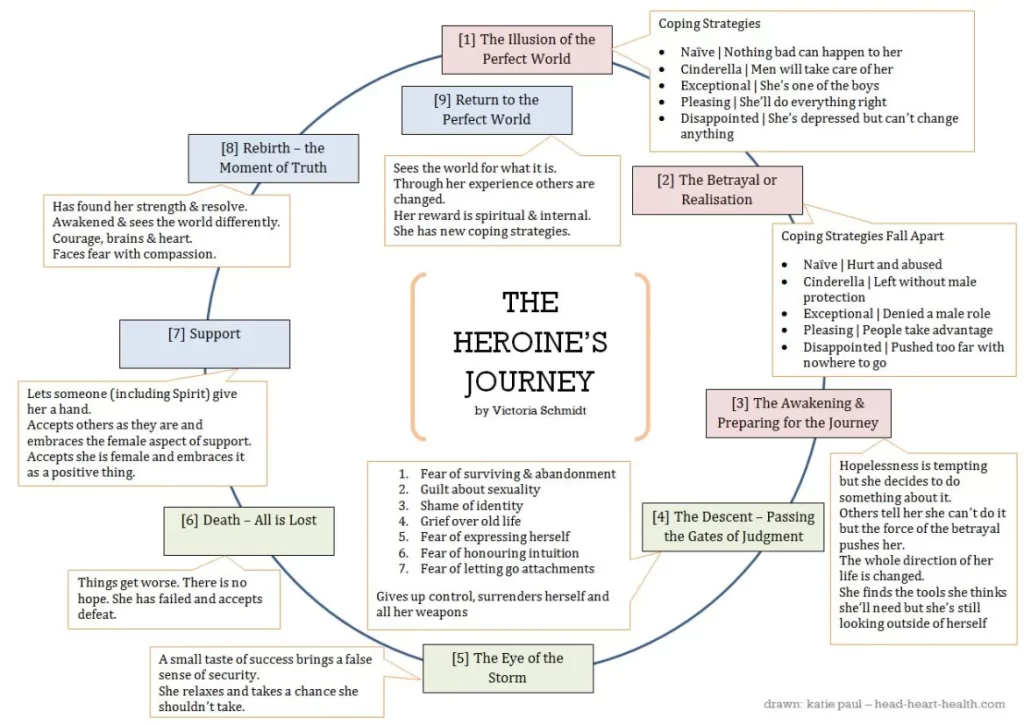How moms can inspire their teen daughters by changing the storyline

Anyone who’s watched a Hollywood blockbuster knows how the story goes: our hero, coming-of-age, is called to adventure, crosses into the dangerous unknown, meets the enemy, conquers his fear, slays the dragon, overcoming superhuman obstacles. Saving his tribe along the way.
It’s Star Wars, Harry Potter and Avatar rolled into one. The “hero’s journey,” has been the stuff of myth since ancient times.
A decidedly individualistic story: the hero (usually male) overcomes his fear to venture out and conquer the enemy; saving his family and tribe after battling demons and dragons, he returns home to accolades. The proverbial “hero’s welcome”.
There’s another story arc that’s less reflected in film and literature but, perhaps, truer to life. The “heroine’s journey,” takes the Cinderella story (a prince will rescue me) to a different place, with the heroine awakening to her own power, bringing together allies to support her.
Mapping the s/hero’s journey
It is powerful to hold up the heroine’s journey in the mirror to guide our daughters through the joys and obstacles she will encounter in her life. The woman’s quest for wholeness relies on a separation and return to self. A great storytelling device but, how might it apply to raising our daughters?
Our lives are made up of stories—some that shame us, trap us or put us down—others that enrich, empower and help us evolve. Understanding the heroine’s journey helps us become more aware of what women face up to—and how they can lead.
Moms who model this for their girls may find inspiration for their own journey.
Here, according to author Victoria Schmidt, are the nine stages of the heroine’s journey.

For mothers who would raise strong, whole and daughters prepared to navigate through the uncertainty of our times, this provides a whole new story, authenticating their inner awareness, intuition and adeptness, and the ability to choose friends who support each other along the way.
Finding your inner shero: initiating the conversation
As she prepares for her own journey, you may want to equip your daughter with a roadmap to live her journey fully. To offer tangible guidance, here are three conversations you might want to initiate with your teen daughter:
- Make friends with your “inner critic.”
That critic may be the voice of your mother, the perfection curated in her Instagram feed, or the loud, insistent misogynistic voices that call out any imperfection. Experts say that, from an evolutionary perspective, the critical voice is protective (“Lions, and tigers, and bears. Oh my!”). But in her social life—and perhaps your own (“This dress makes me look fat”; “Everyone hates me”), not so much.
Ignoring them just makes them louder. Instead, when you see she’s beating herself up over self-criticism, or friend drama, encourage her to strike up a conversation: where she thinks that negative voice is coming from? Is it true, or is this just me doubting myself?
Or have her name that voice: “Thanks, Grandma, for your advice. I know you love me. But I think this may be something you were hurt by growing up. It’s not my problem.”
Oh, and mom, have you made friends with your own inner critic yet? Not a call to “slay the dragon,” but to confront the painful past. Might be worth sharing with her how you’re making the effort.
2. Disregard that face in the social media mirror!
TikTok and Instagram might seem harmless enough obsessions—until they are not. When everyone in her feed is curating her perfect life, it is tempting to do the same. And then to beat herself up over her imperfect life.
Pursuit of something that’s unattainable may send her spiraling down. But check in on the reality: can everyone else but her really be living the dream? And how might the constant pursuit of an illusion actually be harmful?
Maybe you could encourage taking an occasional break from social media as a challenge. Take a “technology sabbath” where, say, every Sunday is a phone-free day.
And while you’re at it, what’s reflecting back in your IG mirror? Does your social feed reinforce how your failing to measure up—or support ways you are good enough?
Make the tech detox a mother-daughter challenge and see talk about how it changes your outlook.
3. Have her back.
Adolescence is a time of fitting in and following the crowd. Think back to your own teen years: how did it feel not to fit in?
Our brains have evolved to help us pick up social cues. Changes in the brain starting in the tween years reflect increasing peer acceptance even as teens seek greater independence from their families.
It’s a scary time. Not yet ready to move away entirely, she may seek the safety of the crowd. Fear of rejection may make her rebel from all you’ve taught her. Or take her down a dark path. In true heroine’s journey fashion, she sets out and rejection sets her back.
What’s a mom to do? Undoubtedly feel rejected when she pushes you away. But you still have a role to play in helping her cultivate resilience, to see new ways forward.
My best advice: don’t take it personally. Be there when she needs you. Show an interest in her life. Listen. Reflect back what you hear her say. Give her responsibilities which, when she lives up to them, earn her greater freedom. Show her you care, but don’t let her walk all over you. Set healthy boundaries.
Nurture yourself: Make some meaningful Mom time
Meanwhile, don’t expect her to take an interest in your life. Confide in your girlfriends. Risk seeing if your own childhood traumas are coming out in trying to keep her “safe.”
And investigate your own story. What passions did you put aside to raise a family? What’s holding you back? Who can you count on when you need a friend—and who’s stopped being there for you?
Each new phase offers a chance for rebirth and renewal—and to be a role model. I invite you to live the heroine’s journey. So tell me: where are you in your journey?
